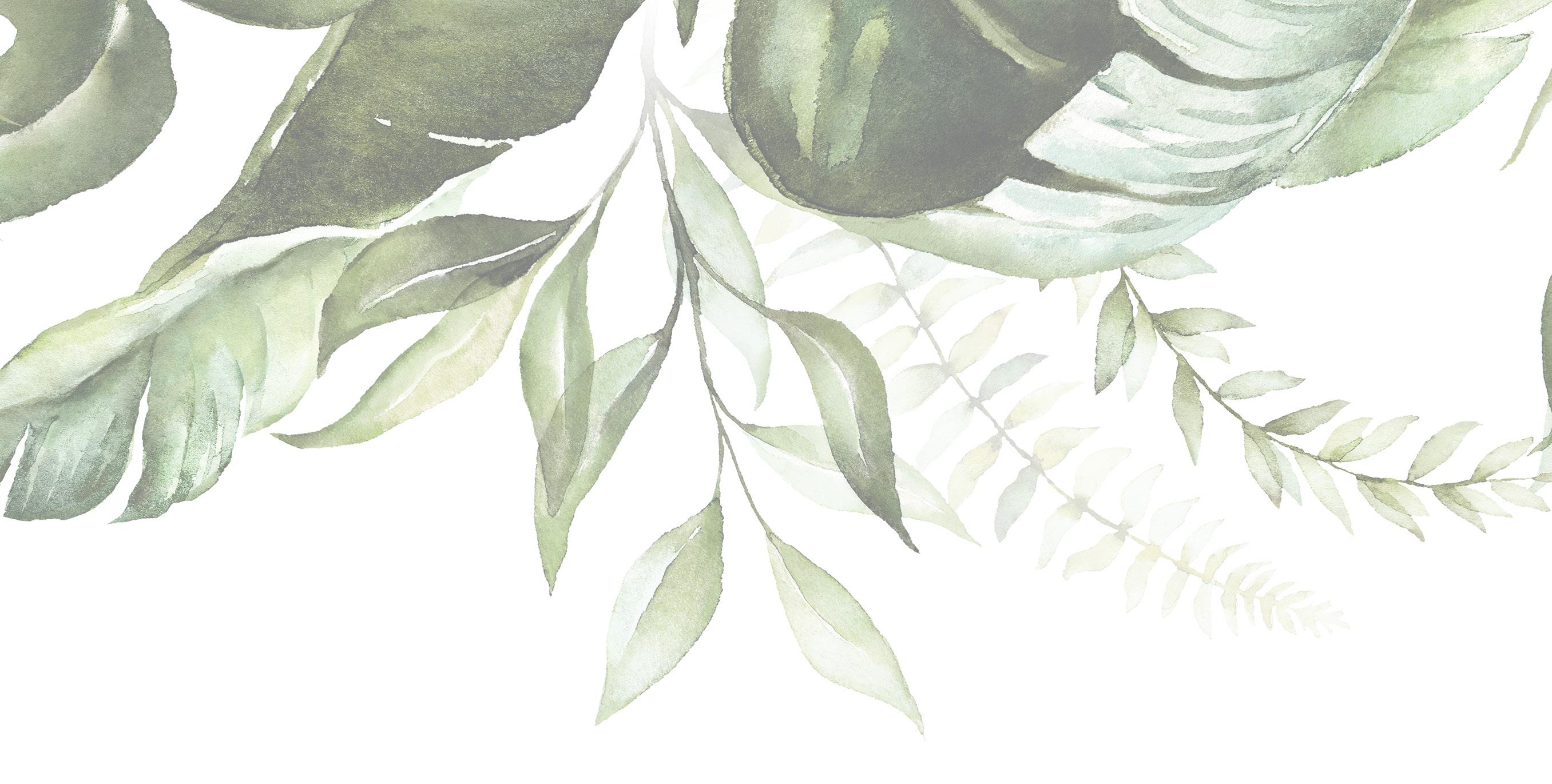
7 minute read
ON THE JOB WITH
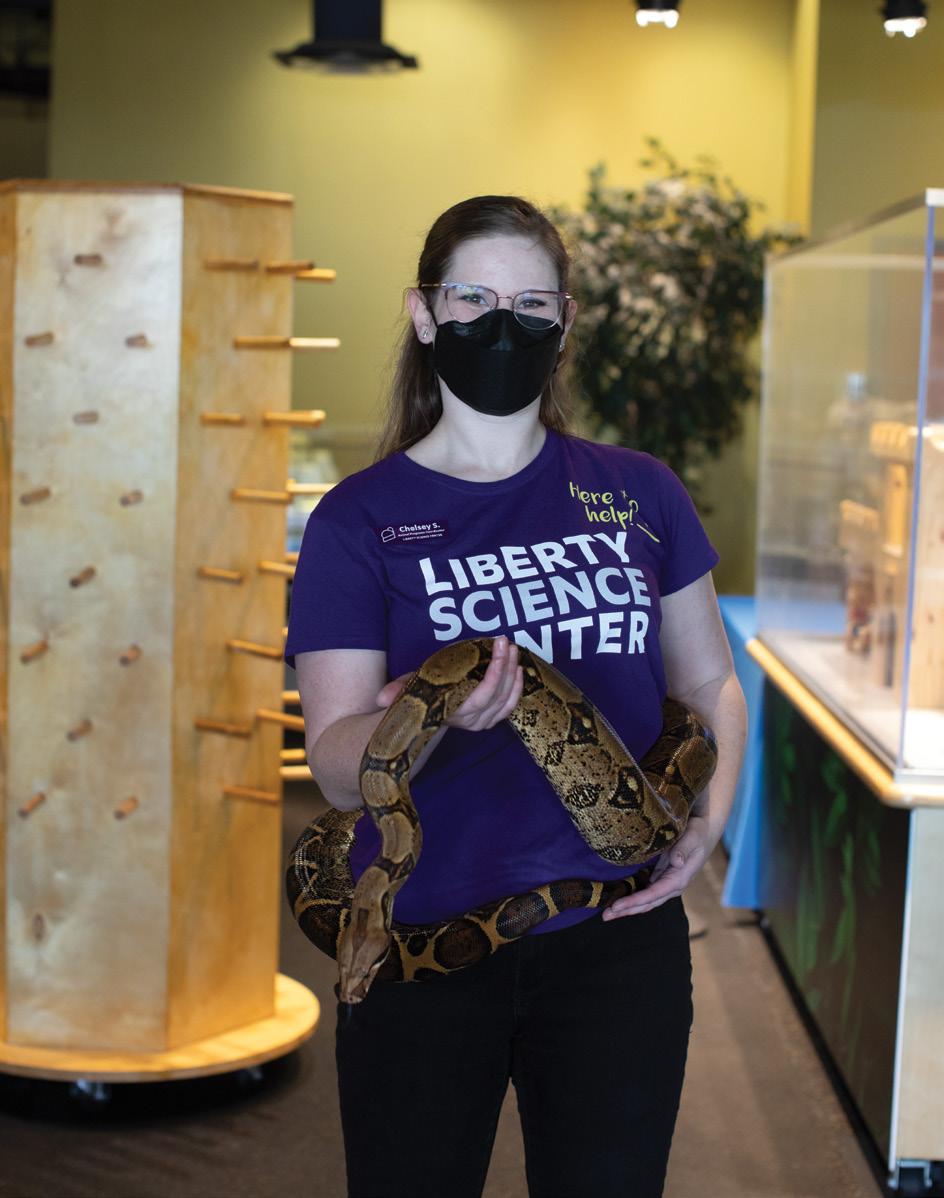
Chelsey Skidmore
Maxim Ryazansky
Wild About Animals
Advertisement
Liberty Science Center
By Tara Ryazansky
Photos by Max Ryazansky
Chelsey Skidmore coaxes a huge tarantula onto a piece of bark with a blush brush, of all things.
“I’m not doing her makeup,” Skidmore explains that it’s just a way to gently move the Chilean rose hair tarantula without touching her. “She isn’t fuzzy and soft. She’s not an animal that you would want to pet. The hair on her body is actually a defense mechanism. She can fl ick off her hairs and they can irritate her predators.”
The crowd that has gathered, myself included, takes a little step back upon learning that information. Skidmore assures us, “They really get a bad rep. People think of them as scary. The truth is that most animals are not aggressive by nature at all. They just want to eat, and they don’t want to get eaten. As long as you’re respectful, there’s no reason to be scared of any animal. Even if they look really diff erent from us, like a tarantula.” Up Close At The Touch Tank
Skidmore is the Animal Program Coordinator at Liberty Science Center. She works with 110 species of live animals who call the museum home. She brings me upstairs to see a few.
In the Our Hudson Home exhibition, guests learn about the animals and environment of Jersey City. You can even connect with some of them up close at the Touch Tank.
Right now we’re headed to the next fl oor where the Wild About Animals exhibit is located. The animals who live here come from places that are far from Jersey City.
Cotton-top tamarin monkeys play inside of their enclosure. Skidmore says that because they are a critically endangered species they can’t come out to meet guests like some of the other animals here.
Endangered animals are a big part of what inspired Skidmore to pursue her career. She remembers coming to Liberty Science Center for class trips when she was growing up in Edison. “I was the kid in the class that was really psyched to come and experience this. I loved anything to do with animals and science.”
She says she was especially inspired by the topic of conservation. She’s still passionate about sharing that with guests.
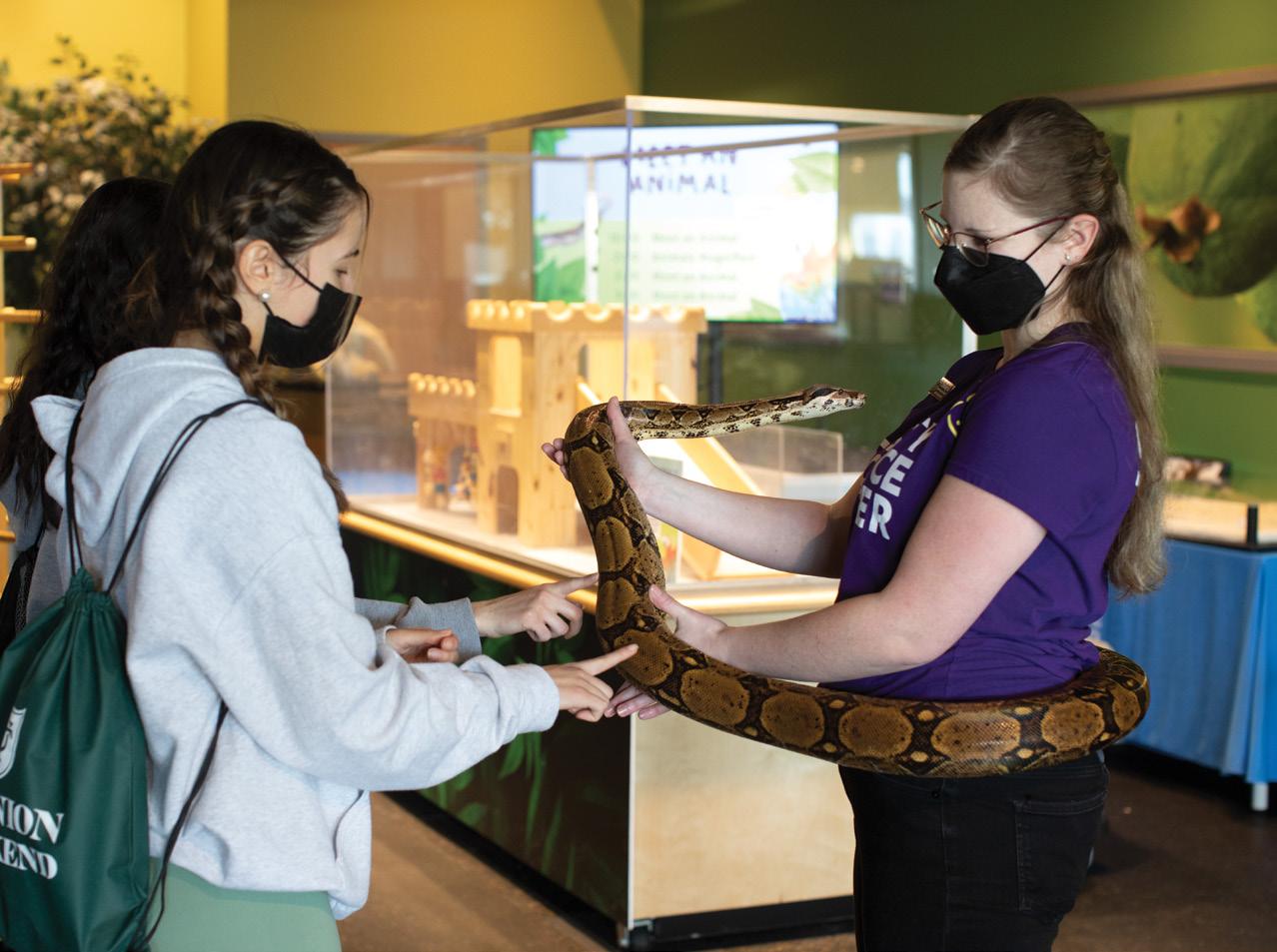
Maxim Ryazansky

Maxim Ryazansky
Hard Topics and Hope
“We don’t shy away from that. It can be diffi cult to talk about something like poaching, especially with younger guests, but it’s very important. What we focus on here is that there’s so much hope, and there’s so much being protected. The cotton-top tamarins are critically endangered, but there are projects and groups making a concerted eff ort to help conserve them and their habitats. There’s a lot of good stuff going on and we want to share that and hopefully contribute to that.”
The animals at Liberty Science Center aren’t just here to look at.
“The technical term for the animals here is animal ambassadors. They’re representatives of their wild species so that we as members of the human species can make a connection with them. Hopefully, that will inspire people, especially our younger generations, to want to help them in the wild,” Skidmore says. “As you’re growing and learning, things that are ingrained in your mind and your heart are going to aff ect you in the future as far as your decisions. If our younger generation is ingrained with a connection to these animals, respect for these animals, understanding that they’re so important, along with their habitat, it’s going to aff ect their decision making in the future.”
A Resistant Species
The animal species at Liberty Science Center are curated to teach guests about specifi c topics.
Skidmore points out the naked mole rat exhibit. These creatures crawl around through a tunnel system. They aren’t as cute as the tamarins, but Skidmore says that they’re just as important.
“These animals as a species have stumped scientists. They don’t show signs of aging. They live much longer than mammals of their size,” Skidmore says that scientifi c studies show that these animals are resistant to cancers. “Humans would like to replicate that and use it to make sure that we’re healthier. Our naked mole rat colony here is a representative of their species and their importance. This is an extreme example of how we can learn from animals.


Maxim Ryazansky
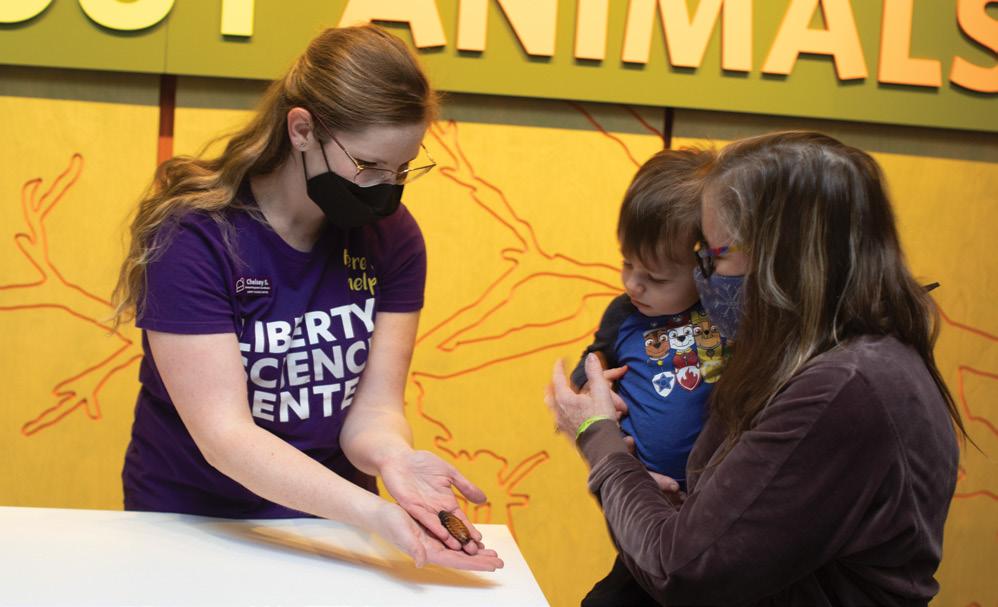
Maxim Ryazansky

Maxim Ryazansky
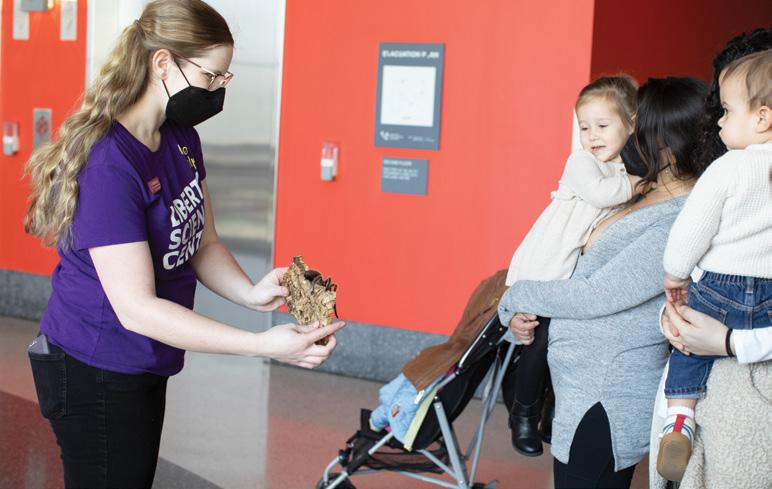
Maxim Ryazansky

Maxim Ryazansky
Ecosystems and Essentials
“Animals aren’t something just hanging out in your backyard or a nuisance getting into your garage or the spider running around in your house. Animals are an essential part of our ecosystem, which we’re a part of, too. That means the more that we can learn about them and how they function and how they survive and how they adapt, the more that is going to ultimately help us.”
A big part of Skidmore’s workday is enriching these important animals.
“Enrichment means we’re giving our animals new things to interact with,” Skidmore says.
For some animals, like the Argentine Black and White Tegu, that simply means acclimating to being held, but for others, it means going through exercises that can make for a fun show for guests.
“One of my favorite enrichments is a really big climber that we built in-house for some of our snakes.”
When I hear the word snake I get a little nervous. Personally, I would take a tarantula or even a Madagascar hissing cockroach over a snake.
From a distance, Skidmore introduces me to Rosie, a red-tailed boa constrictor. The snake wraps itself around Skidmore, who assures me that it doesn’t hurt.
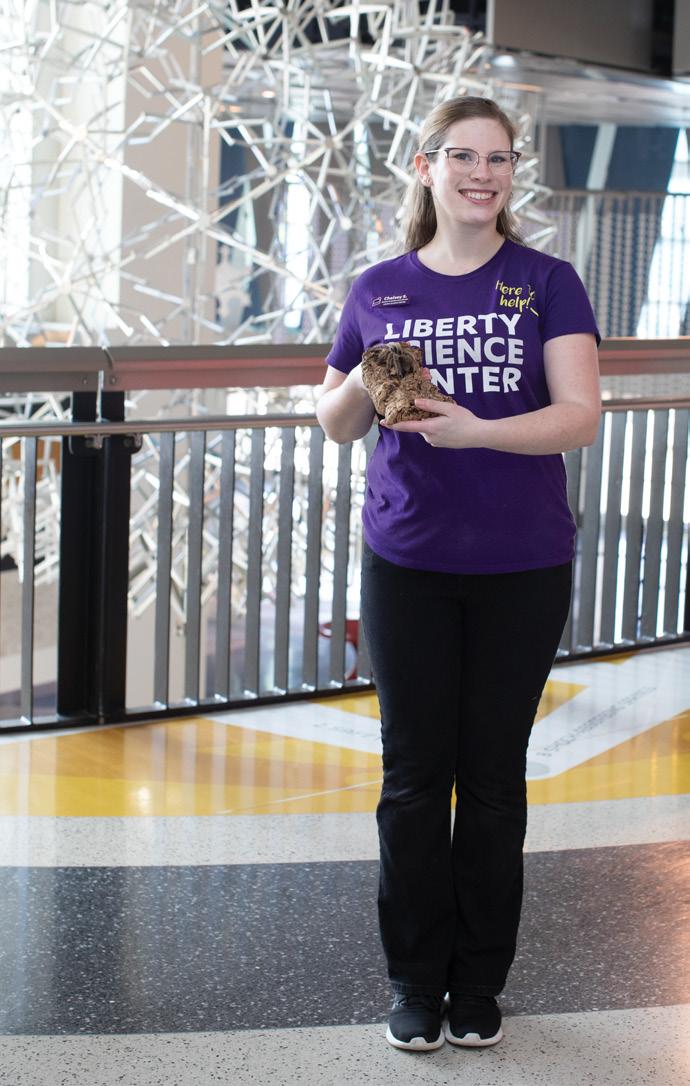
Chelsey Skidmore
Maxim Ryazansky
Exercise and Play
“It’s very similar to a child holding onto your shoulders when you pick them up.”
Soon, Rosie is wrapping herself around the wooden spokes of the climber. Skidmore says that this enrichment exercise helps the snake build strength and develop her natural curiosity as she uses her senses. A crowd forms and Skidmore answers questions about the animal.
“Have you ever been to a playground before?” Skidmore asks the kids in the group. “Rosie likes to climb, too. She usually likes to be in the rainforest, but I couldn’t bring the whole rainforest inside.”
Everyone is captivated by Rosie and Skidmore, who interacts with each guest while monitoring the snake as it climbs. However, Skidmore gets mixed reactions when she asks if anyone wants to pet Rosie.
Skidmore says she’s used to that. As she explains more about Rosie’s features some reluctant folks in the back step up to touch Rosie. I pet her, too.
“When I was a kid I was the one who was leading the charge with anything hands-on. I see kids come in with that same high level of energy,” Skidmore explains. “We also have people come in who are a little apathetic or even nervous around animals. Then I’m the one who gets to spark that in them. I love to show them the animal that they’re nervous about in a whole diff erent way. It’s fantastic.” —JCM








